Markets Navigate Weekly Volatility: Equities, Gold, Forex, and Bitcoin ETFs Await Key Developments | Daily Market Analysis

Key events:
- USA - FOMC Member Bostic Speaks
US stock indices experienced a volatile session on Friday, ultimately closing with slight gains. However, these modest increases were insufficient to prevent the S&P 500 and Nasdaq Composite from commencing 2024 with their most significant weekly declines in months.
All three major benchmarks marked their first weekly downturns in ten weeks, with the S&P 500 decreasing by 1.54%, the Nasdaq Composite slumping by 3.26%, and the Dow Jones Industrial Average dipping by 0.59%.

This week represented the S&P 500's poorest performance since late October, while the Nasdaq recorded its most challenging week since late September.
Investors approached the initial sessions of 2024 with caution, seeking further clarity on the timing and pace of potential interest rate cuts.
Expectations of a swift easing cycle had triggered a robust rally in the final weeks of 2023, propelling the S&P 500 to nearly its all-time high. Any undermining of this anticipation led to profit-taking.
Friday's session witnessed market fluctuations as investors processed contrasting macroeconomic data regarding the potential timing of interest rate cuts.
However, a survey by the Institute for Supply Management (ISM) revealed a decrease in activity in the services sector for December, suggesting a weaker economy. This encouraged those anticipating swift rate cuts, leading to market gains throughout the morning and into the afternoon.
Gold prices faced a decline in Asian trading on Monday, extending losses from the previous session. This downward trend was prompted by stronger-than-expected US labor data, leading markets to reassess anticipations for early interest rate cuts.
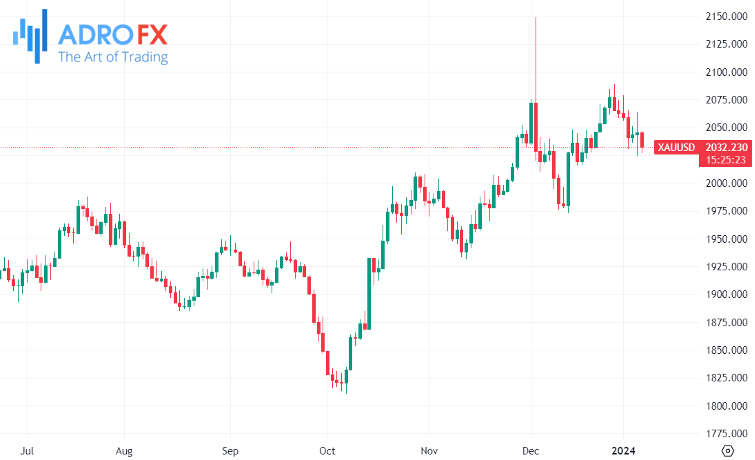
The precious metal encountered a sluggish beginning in 2024, aligning with a notable resurgence in the dollar as traders tempered expectations that the Federal Reserve might trim rates as early as March.
The impact was further amplified by robust nonfarm payrolls data released on Friday, showcasing the labor market's resilience. This data provides the Fed with greater flexibility to maintain higher interest rates for an extended period.
Gold experienced significant profit-taking after a robust surge in December, culminating in a more than 10% gain by the end of 2023.
Market attention is now squarely focused on the upcoming key US Consumer Price Index (CPI) inflation data for December, scheduled for release on Thursday. This reading, following a robust payrolls report, is anticipated to reveal an increase in inflation compared to the previous month.
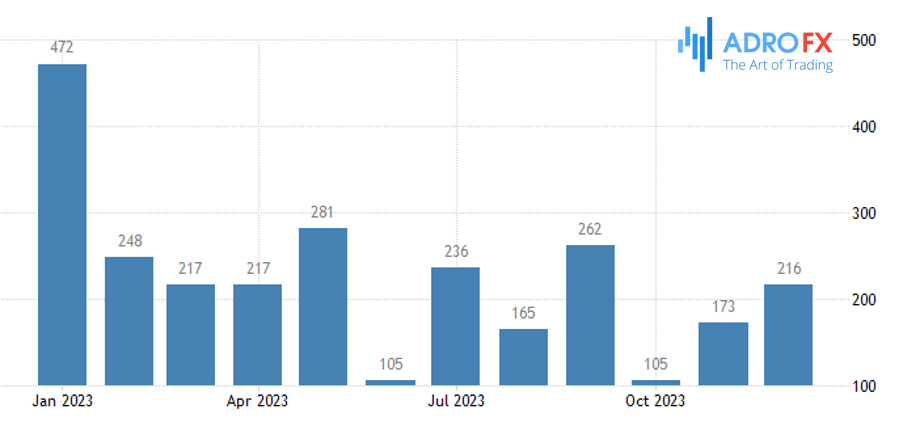
Any indications of persistent inflation pose challenges to expectations for early interest rate cuts by the Fed, as both the labor market and inflation are pivotal factors considered by the central bank in monetary policy adjustments.
The Fed had previously cautioned that signs of sustained inflation and a robust labor market could delay any early interest rate cuts. The CME Fedwatch tool indicated a shift in trader expectations for a March cut, with the likelihood of a 25 basis point cut decreasing to around 63%, down from over 73% priced in the previous week.
The prospect of higher interest rates in the near term is anticipated to exert additional pressure on gold, which faced challenges throughout much of 2023 amid rising rates. While expectations for a rate cut by the Fed persist later in the year, analysts at ING have adjusted their projections, pushing back expectations for a cut from March to May.
Elevated interest rates elevate the opportunity cost of investing in bullion, which offers no yield.
The Japanese Yen faces challenges in capitalizing on its modest intraday gains, remaining well within striking distance of a three-week low reached on Friday.
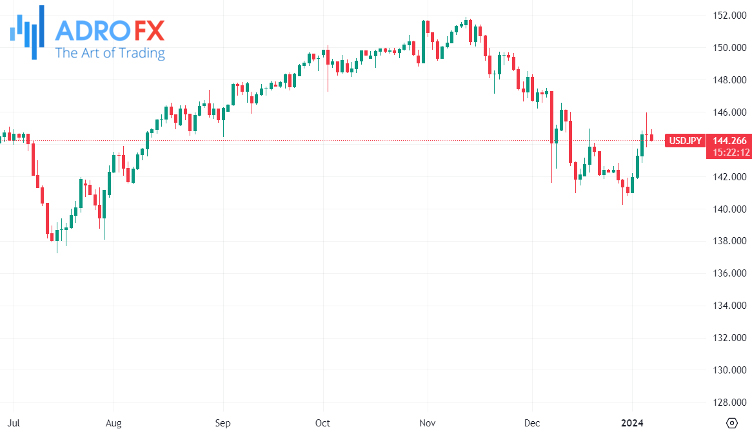
The prevailing consensus that the Bank of Japan (BoJ) will not abandon its negative interest rates policy during the January 22-23 meeting, following the New Year's Day earthquake in Japan, continues to exert downward pressure on the JPY. Alongside a slight uptick in the US Dollar, the USD/JPY pair maintains its position just below the mid-144.00s as the European session begins on Monday.
On the other hand, the Australian Dollar is trading lower against the US Dollar on Monday. The AUD/USD pair underwent a volatile session on Friday, influenced by mixed economic data from the United States. Despite a robust US employment report, concerns persist about weaker business activity in the services sector, leading investors to approach the economic outlook with caution.
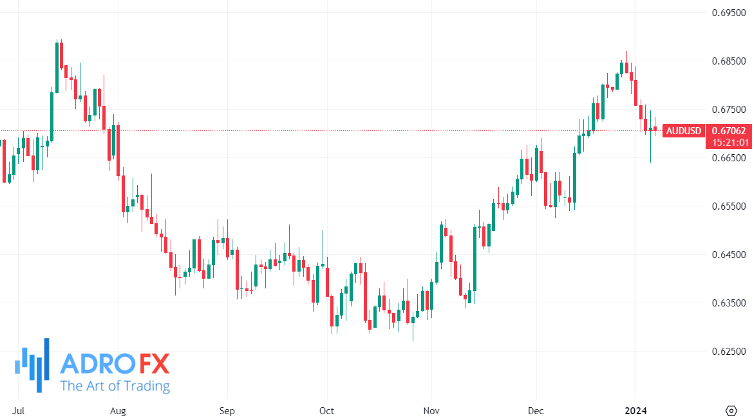
Australia's upcoming Retail Sales (MoM) data for November, scheduled for release on Tuesday and expected to show a 1.2% increase from October's 0.2% decline, could impact Reserve Bank of Australia (RBA) policymakers' decisions on maintaining elevated interest rates. However, the recent Judo Bank Purchasing Managers Index (PMI) data revealed a contraction in business activities in both the services and manufacturing sectors, potentially underscoring the vulnerability of the Australian Dollar.
The Pound Sterling displays robust gains against the US Dollar, driven by an improvement in market risk appetite despite the release of positive US economic data. However, Pound Sterling's current strength may face challenges ahead as investors anticipate difficult decisions for Bank of England policymakers. The BoE finds itself caught between heightened recession risks in the UK economy and persistently high underlying inflation.
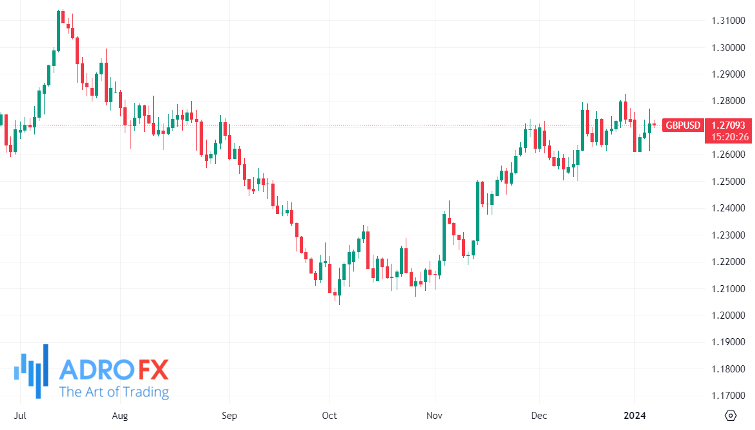
The likelihood of a technical recession in the UK remains significant, given the contraction in the third quarter and an expected lackluster performance in the final quarter. Recent PMI data signals ongoing challenges in the manufacturing sector, primarily attributed to elevated interest rates. The outlook for the GBP/USD pair is somewhat muted, with the potential for reshaped guidance on interest rates by the Federal Reserve (Fed) driven by US employment indicators.
Meanwhile, approval for Bitcoin Spot ETFs from the US financial regulator is anticipated as early as this week, as reported by Bloomberg. Bitcoin holders are eagerly awaiting the Securities and Exchange Commission's approval for this securities product, with the looming deadline set for January 10.
Insiders suggest that the regulator might use the January 10 deadline to unveil decisions on multiple Spot Bitcoin ETF applications simultaneously. Close to a dozen applicants are anxiously awaiting the SEC's verdict, having prepared seed capital and marketed their Spot BTC ETF products.









